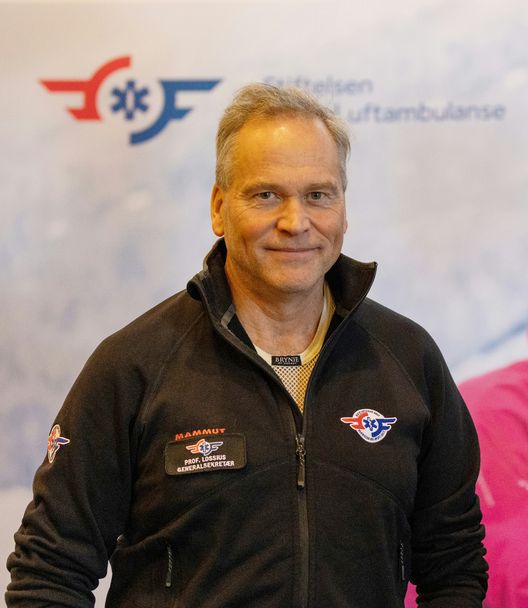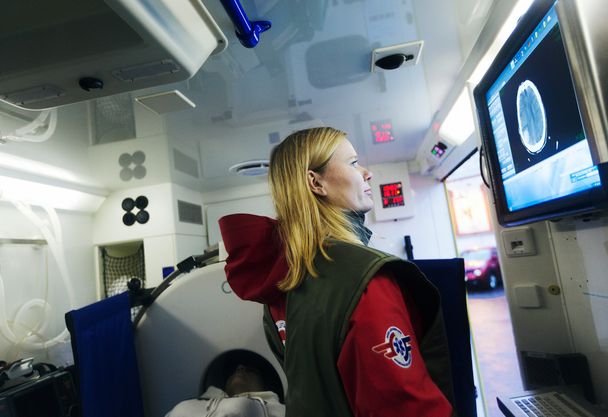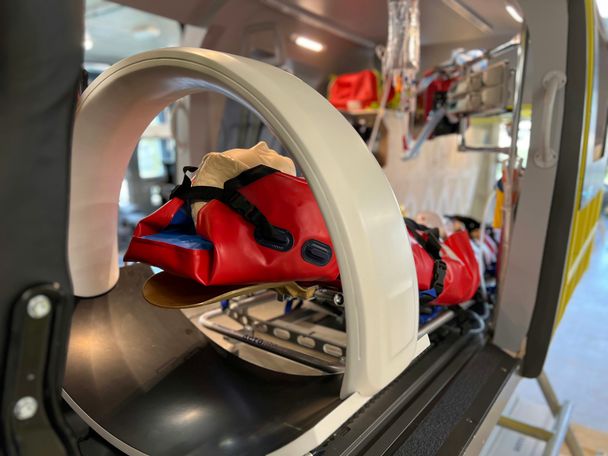Pioneering for their patients

Norwegian Air Ambulance Foundation introduced helicopter emergency medical services (HEMS) to Norway in the 1970s – a healthcare game-changer for a country with a mix of remote towns and major cities, often with climatic and geographic challenges. Secretary General, Professor Hans Morten Lossius, explains how the non-profit invests to increase positive patient outcomes.
Airbus Helicopters: Norwegian Air Ambulance Foundation was the first operator of the five-bladed H145. What impact does it have on your activities?
Hans Morten Lossius: Part of the foundation's role is to fund research and development. Over the last 20 years we have established a huge group of researchers. At any time, there are approximately 25 PhD students, 15 senior researchers, including professorships, and higher academic positions. Research is mainly focused on HEMS activity, so we needed a realistic platform to conduct our research and the on-call helicopters are needed for patients. Norway is a country with 13 bases running medical transport 7 days a week, 365 days a year. For such advanced research it made sense to have the best and most modern HEMS platform, so we chose the new five-bladed H145.

Airbus Helicopters: What are some of the projects that you are researching?
Hans Morten Lossius: We see that our service does many neonatal transfers, premature children, often in a very fragile condition, are transported from district hospitals to the university hospitals for intensive care treatment. These transports are absolutely critical. When these small infants arrive at the university hospital they get into an intensive care unit with noise reduction, with light reduction, and with controlled temperatures – a really controlled environment. However, during the transport in a helicopter, there is noise, vibrations and changing temperatures. We need to look into the impact of the helicopter’s environment on these infants, so we have a huge project with engineers, specialist doctors and crews looking into how to improve that transport. Looking at how to improve what we call the medical cockpit, the cabin of a HEMS helicopter, is a continuous focus for us.
Airbus Helicopters: What else have you identified that will increase even further the positive healthcare outcomes for the patients you are transporting?
Hans Morten Lossius: We're looking into how on-board 5G coverage is for a helicopter - so how the telecom companies can read director antennas to get better coverage for HEMS, because we are more and more dependent on 5G connections for lots of activities. For instance, when they do ultrasound, how can those pictures be transferred directly to hospitals, in flight where you're doing the ultrasound? We aim to both improve ultrasound conditions and the telemedicine connections for the ultrasound pictures. Another huge project we are working on is the CT scanner, fitting a CT scanner into a helicopter and integrating it into the medical cockpits of small to middle sized helicopters, like the H145. I should also mention that we are doing research on medical intervention called REBOA (resuscitative endovascular balloon occlusion of the aorta) which involves placing a catheter into a major artery and blowing up a balloon to stop bleeding – we’re looking at how to do that in flight.

Airbus Helicopters: You signed a partnership with Airbus to examine how Advanced Air Mobility projects can work for HEMS – why is this important for Norwegian healthcare services?
Hans Morten Lossius: HEMS is vital and so is reducing our carbon footprint, so we want to examine ways of making operations more sustainable. We share many views with Airbus regarding the importance of regular HEMS and sustainability, so we are working together. We have more than 300,000 dedicated supporters - and that's out of a population of 5 million – so we have the continuing support of a huge group in Norway. That tells us how important the Norwegian population thinks the service is. People want to feel safe wherever they live, and they see health services as an essential part of this, now and in the future.
Airbus Helicopters: Can you tell us about the HEMS conference that you’re organising, taking place in Oslo in December?
Hans Morten Lossius: The main purpose of the conference is to bring the industry, professionals, decision makers, and administrators together in the same room to create an environment where we can make the service better for patients. There are many topics on the agenda, such as sustainability, raising quality and how to share best practices where collaboration between the industry and the service is also important. We will also talk about how to improve the medical cockpit and working environments for the doctors working in flight, because if you look into the cockpit of a helicopter everything is perfect and the pilot sits in the seat with his belt on he can reach everything he needs and can see everything he needs. If you look in the back with the doctor, it's commotion, there are alarms and there are parts of the cabin he needs a belt to reach and for the patient. So it is sometimes tumultuous and urgent. So we're looking at how we can improve the working environment for the doctor and the patient.




